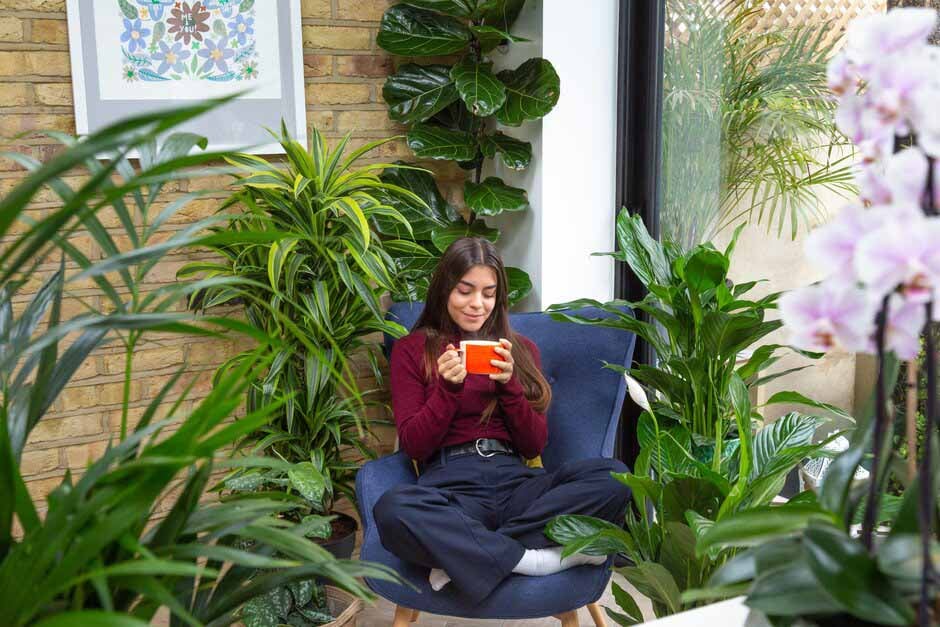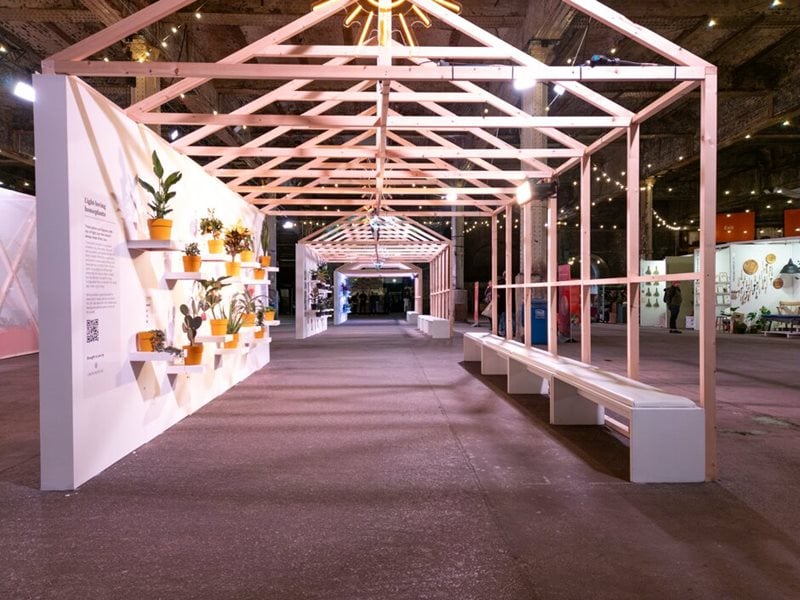This year’s RHS Urban Show introduces an innovative houseplant feature designed to deepen your understanding of selecting the perfect houseplant tailored to your home’s unique environment

GrowTropicals, with designer Jacob James, are bringing a new exhibit to the RHS Urban Show, which aims to end the dreaded cycle of buying beautiful indoor plants, only for them to droop and die at home.
Emphasising the importance of right plant, right place, this exhibit showcases an impressive array of 38 plants, ranging from the familiar to the rare and exotic. The plants are organised into three distinct categories based on their preference for sunlight, shade or humidity, ensuring everyone can find a plant that will thrive.
Houseplant care guides

Each plant has comprehensive information that includes whether the plant is safe for pets, its price range, specific light and water needs, and if it is edible. QR codes beside each category directs visitors to detailed care instructions, helping to not only make an informed choice at the show, but also succeed in nurturing the plants at home.
Right plant, right place
The exhibit emphasises sustainability through plant longevity and responsible gardening, highlighting the environmental and personal benefits of nurturing plants without contributing to waste. By selecting the right plants and providing detailed care information, the exhibit aims to reduce the cycle of purchasing and inadvertently killing plants.
 This approach not only promotes a deeper connection between individuals and their plants but also advocates for a more sustainable practice of plant care, reducing waste and encouraging a more mindful interaction with our natural surroundings.
This approach not only promotes a deeper connection between individuals and their plants but also advocates for a more sustainable practice of plant care, reducing waste and encouraging a more mindful interaction with our natural surroundings.
 Jacob’s advice for indoor plants
Jacob’s advice for indoor plants
1) Select the right plant for your home
The first step to successful plant care begins even before you bring a plant home. Understanding your home’s environmental conditions is crucial. Different plants require different levels of humidity, temperature ranges, and light exposure to thrive. For instance, tropical plants generally prefer higher humidity and warmer temperatures, mimicking their native environments, while succulents and cacti are suited for drier air and can tolerate higher temperatures.
Assessing the conditions of your space, such as how dry or humid it is, the range of temperatures throughout the day and year, and which areas receive ample light-will guide you in choosing plants that are best adapted to your home's unique environment. This alignment between plant needs and home conditions is key to minimizing stress on the plant and reducing the care needed to keep it healthy.
2) Don’t overcare (most deaths are from overwatering)
One of the most common pitfalls in plant care is overwatering, which can lead to root rot, a condition that is often fatal to plants. Overcaring stems from a well-intentioned desire to ensure plants have enough water and nutrients, but it’s important to remember that different plants have vastly different water needs. Overwatering can suffocate plant roots, depriving them of the oxygen they need to absorb nutrients and water efficiently.
To avoid this, ensure you understand the watering needs of each specific plant. Most plants prefer allowing the top inch or two of soil to dry out before watering again. Using pots with drainage holes and checking the soil moisture are good practices to prevent overwatering. Learning to recognise the signs of both under and over-watering can help you adjust your care routine to what your plant truly needs.
More from the RHS
3) Give the plant more light than you think
Light is one of the most critical factors in plant health, yet it is often
underestimated in indoor gardening. Photosynthesis, the process by which plants convert light into energy, is essential for growth and vitality. Many houseplants are marketed as ‘low light plants, which can be misleading. While these plants can survive in low light conditions, they will not thrive or grow vigorously without adequate light.
If possible, place plants near windows or in areas where they can receive ample indirect sunlight for the majority of the day. For spaces that lack natural light, consider using grow lights to supplement light exposure. These can be particularly beneficial during winter months when daylight hours are shorter. Observing your plant’s response to its light environment can provide valuable cues for adjustment; for example, leggy growth or leaning towards a light source often indicates the need for more light.
 Happy Houseplants aims to empower individuals living in small spaces with the knowledge and tools to overcome common challenges, so they can create thriving indoor gardens that enhance their environment. Happy houseplants make for happy urban gardeners.
Happy Houseplants aims to empower individuals living in small spaces with the knowledge and tools to overcome common challenges, so they can create thriving indoor gardens that enhance their environment. Happy houseplants make for happy urban gardeners.
You might also be interested in...

